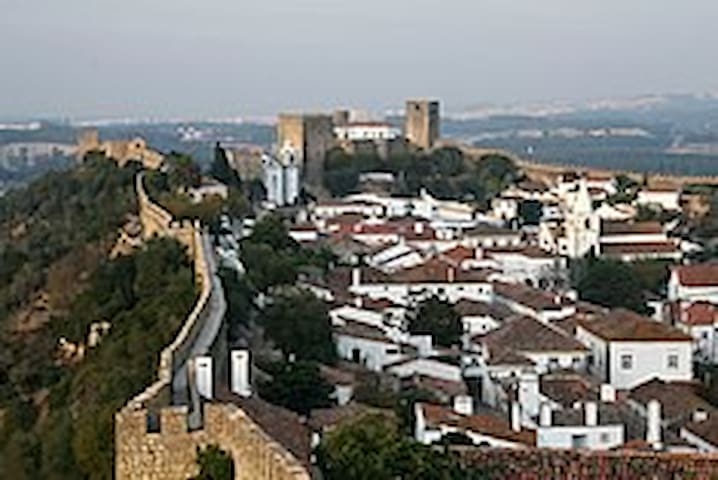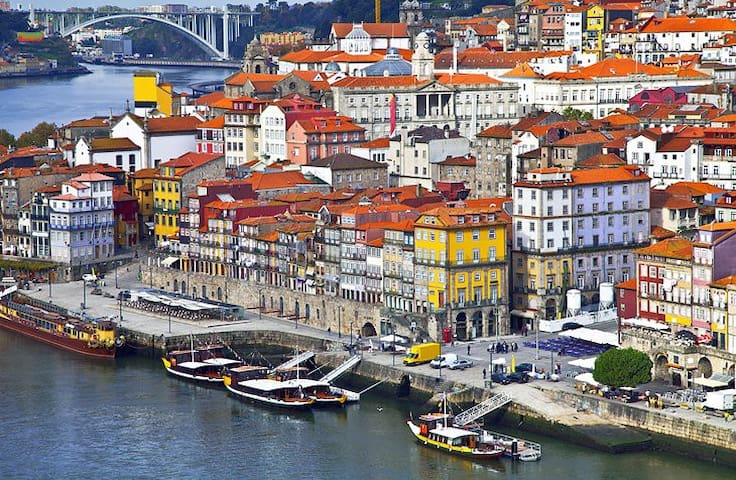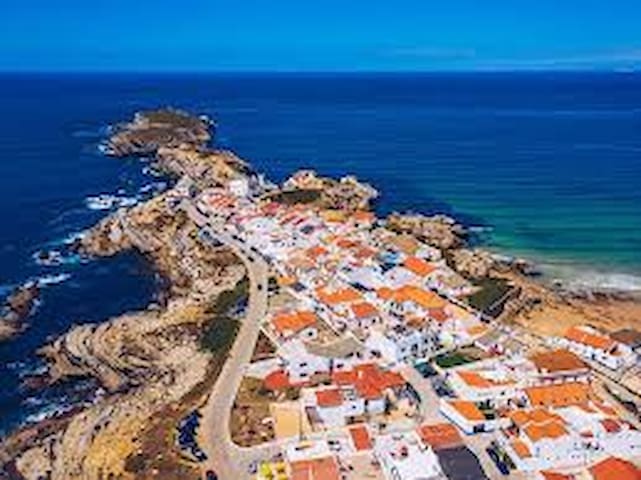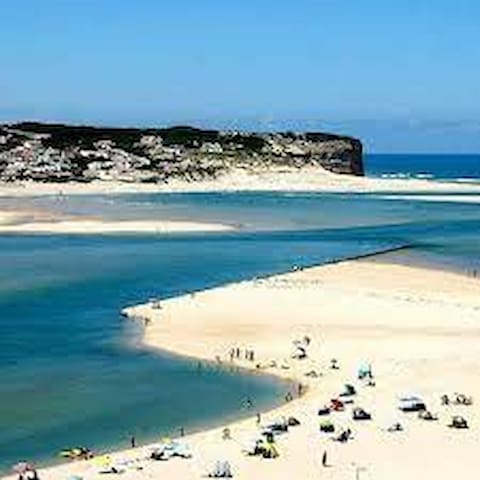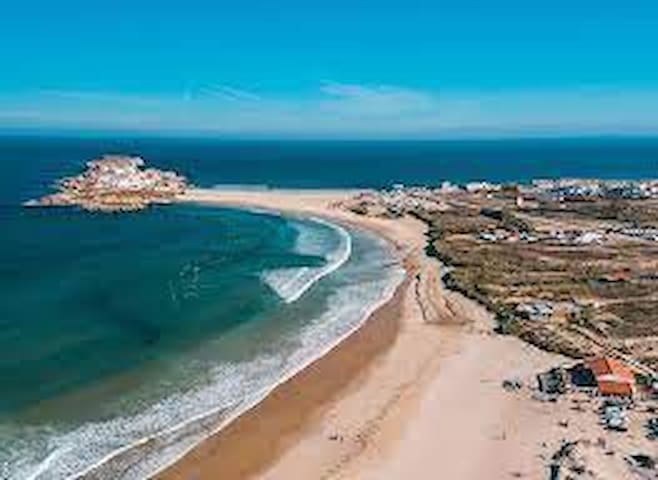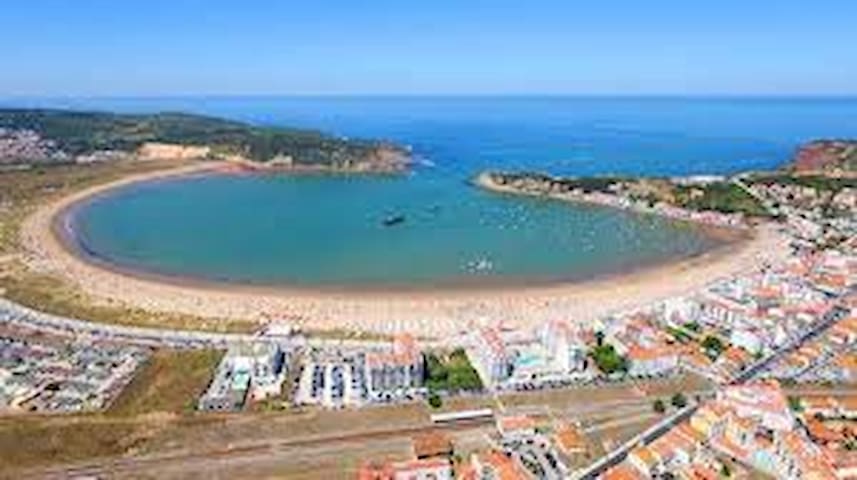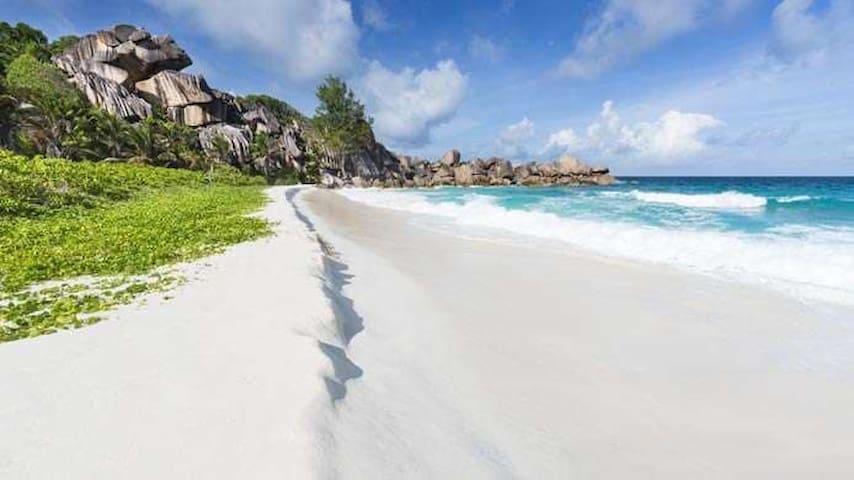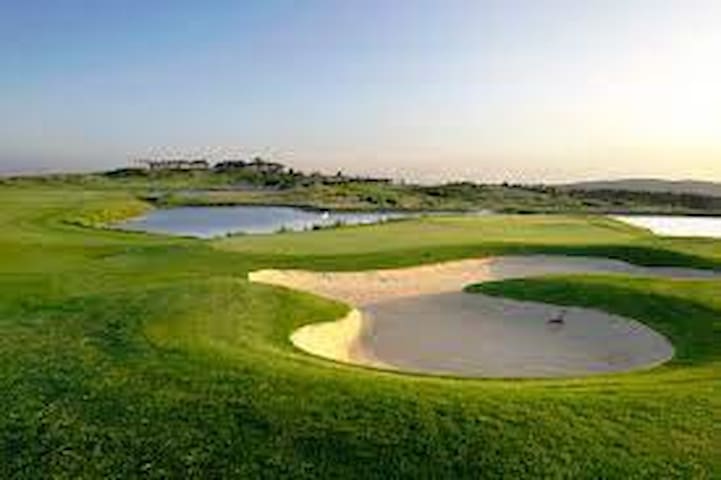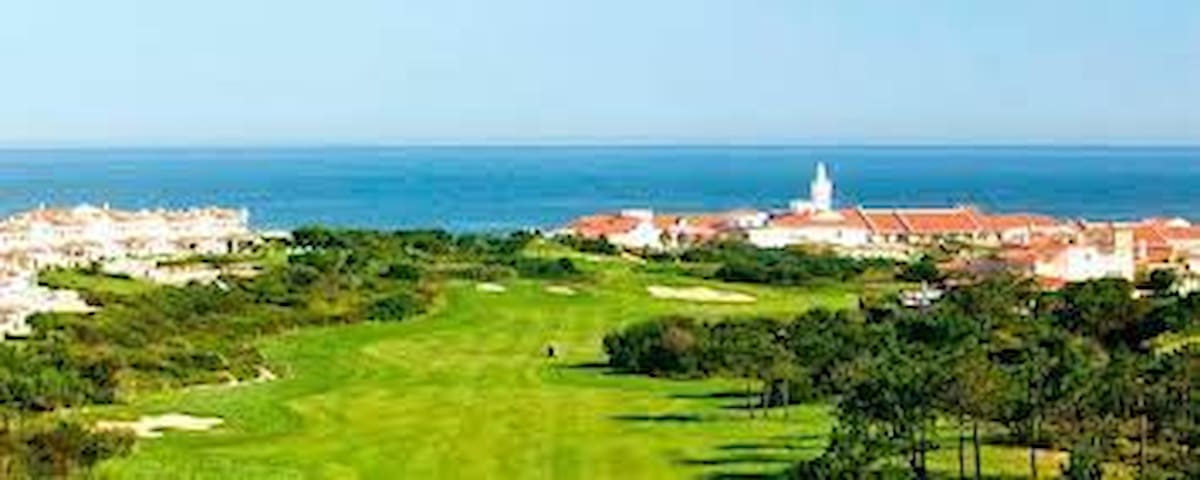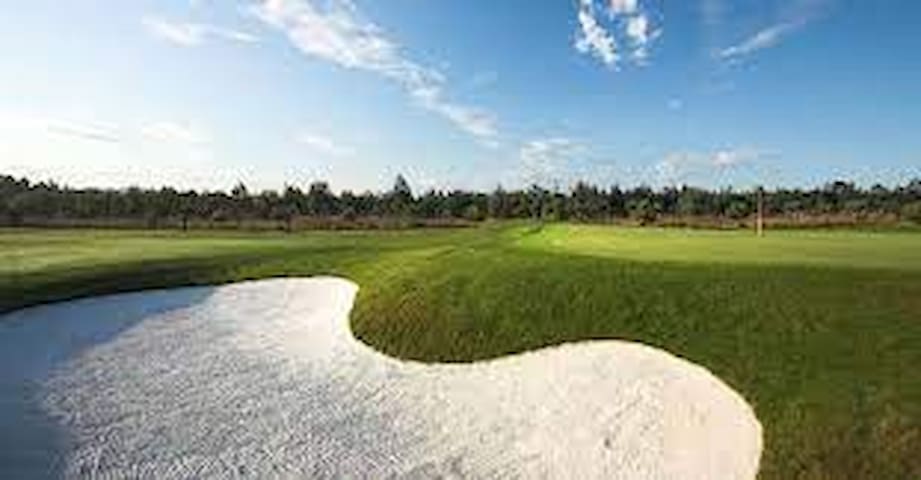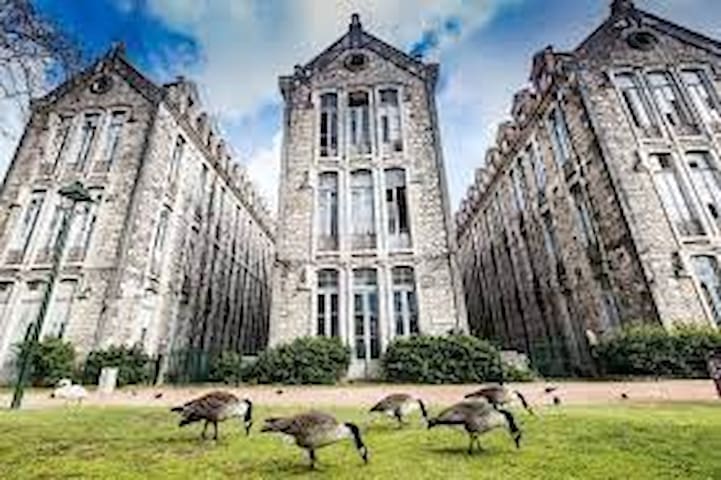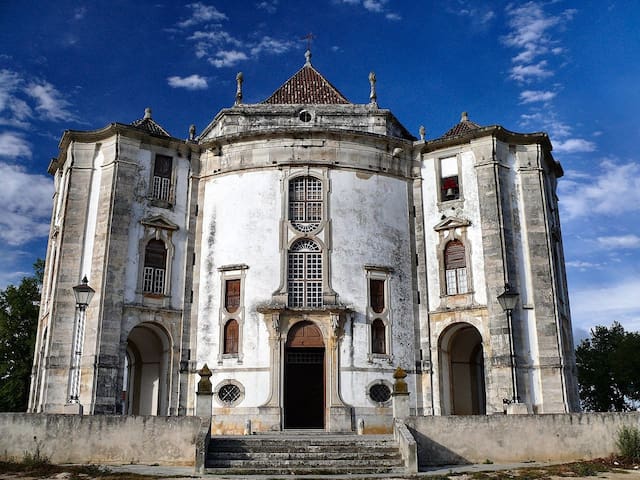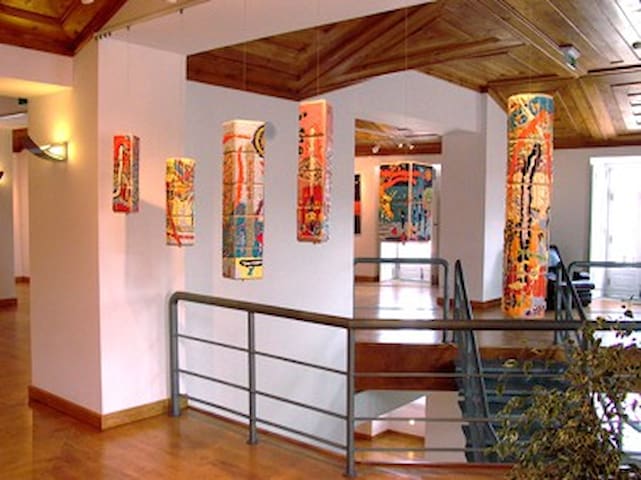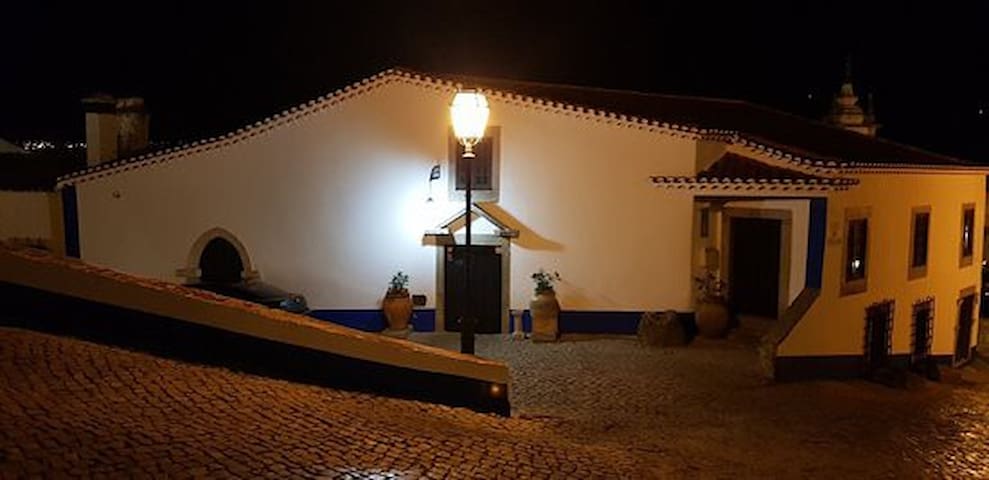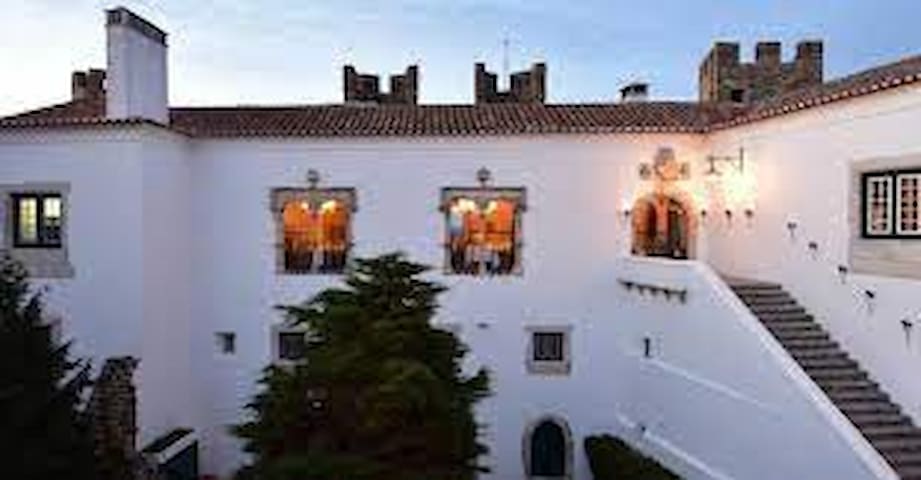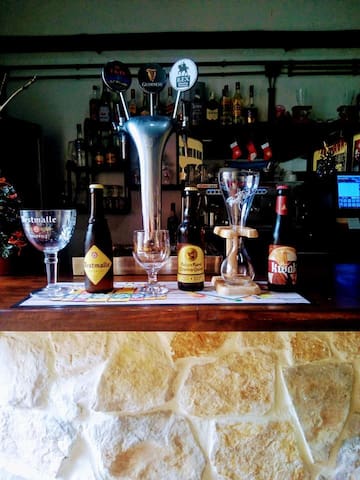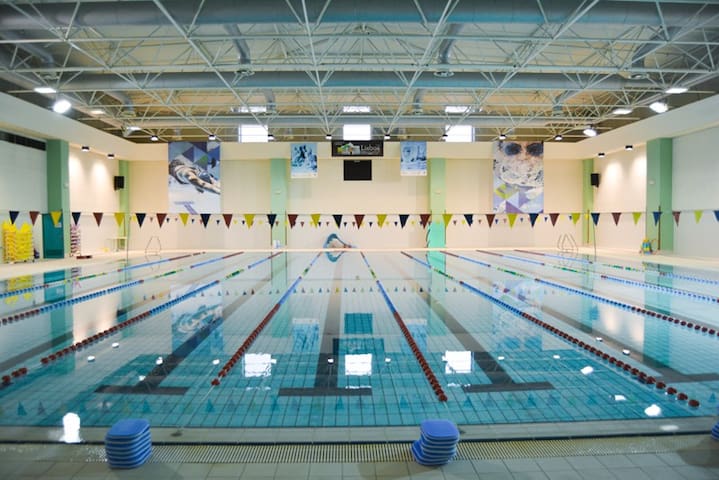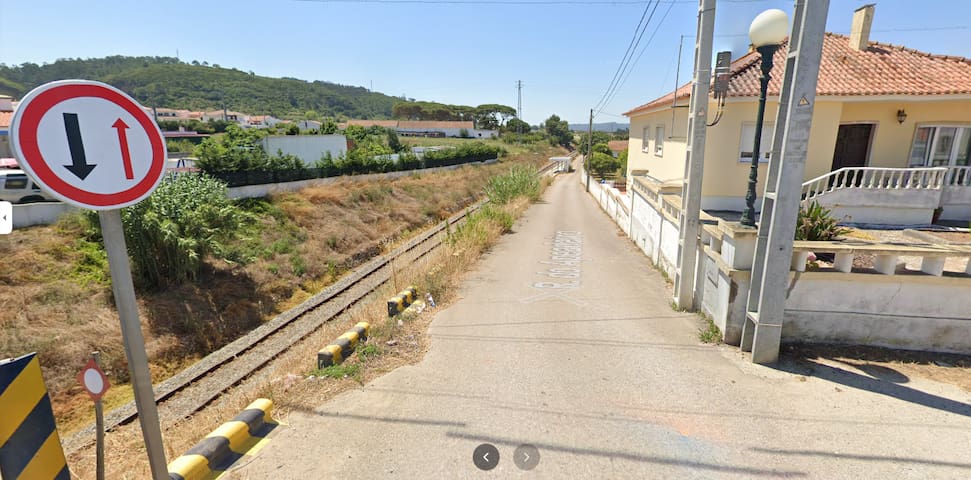City/town information
The mediaeval town of Óbidos is one of the most picturesque and well preserved in Portugal. Its a fine example of a Portuguese walled town and is one of the best tourist destinations of the Lisbon region. Historically, Obidos was owned by the Queen of Portugal, a tradition that began in 1282 when the town was gifted to Queen Isabel on her wedding day.
583 Einheimische empfehlen
Óbidos Municipality
The mediaeval town of Óbidos is one of the most picturesque and well preserved in Portugal. Its a fine example of a Portuguese walled town and is one of the best tourist destinations of the Lisbon region. Historically, Obidos was owned by the Queen of Portugal, a tradition that began in 1282 when the town was gifted to Queen Isabel on her wedding day.
Lisbon is a historical city full of stories to tell, where the sun shines 290 days a year and the temperature rarely drops below 15oC. A city where you feel safe wandering around day or night, where the cuisine is dedicated to creating over a thousand ways to cook the beloved bacalhau (salted cod), and where you’ll find hotels and restaurants to suit every taste, budget and requirement. Discover Lisbon, a city full of authenticity where old customs and ancient history intermix with cultural entertainment and hi-tech innovation. Lisbon is ageless, but it loves company, as you’ll find out if you meet someone and ask them to explain, with lots of gestures and repetition, where the best place is to listen to Fado. After all, Lisbon is famous for its hospitality and the family-like way it welcomes visitors.
534 Einheimische empfehlen
Lisbon
Lisbon is a historical city full of stories to tell, where the sun shines 290 days a year and the temperature rarely drops below 15oC. A city where you feel safe wandering around day or night, where the cuisine is dedicated to creating over a thousand ways to cook the beloved bacalhau (salted cod), and where you’ll find hotels and restaurants to suit every taste, budget and requirement. Discover Lisbon, a city full of authenticity where old customs and ancient history intermix with cultural entertainment and hi-tech innovation. Lisbon is ageless, but it loves company, as you’ll find out if you meet someone and ask them to explain, with lots of gestures and repetition, where the best place is to listen to Fado. After all, Lisbon is famous for its hospitality and the family-like way it welcomes visitors.
Porto is the second-largest city in Portugal after Lisbon, with 1.7 million inhabitants.
Porto was chosen as “The City to Visit This Year” by Forbes in 2017 and is a definite must-see city in Europe, even if it is just for a weekend break.
Located in the north of Portugal by the outlet of the Douro River, it has a unique atmosphere with elegant neighbourhoods and large villas sitting on narrow cobbled streets. This soulful city was classified as a World Heritage Site by UNESCO in 1996.
Porto is just the perfect size to explore by foot. You’ll enjoy wandering down its alleyways full of history and nostalgia. An evening walk along the Douro River, visiting the vibrant Mercado do Bolhão or sampling its renowned Port wine are just some of the many things you can do in this fascinating city.
329 Einheimische empfehlen
Porto
Porto is the second-largest city in Portugal after Lisbon, with 1.7 million inhabitants.
Porto was chosen as “The City to Visit This Year” by Forbes in 2017 and is a definite must-see city in Europe, even if it is just for a weekend break.
Located in the north of Portugal by the outlet of the Douro River, it has a unique atmosphere with elegant neighbourhoods and large villas sitting on narrow cobbled streets. This soulful city was classified as a World Heritage Site by UNESCO in 1996.
Porto is just the perfect size to explore by foot. You’ll enjoy wandering down its alleyways full of history and nostalgia. An evening walk along the Douro River, visiting the vibrant Mercado do Bolhão or sampling its renowned Port wine are just some of the many things you can do in this fascinating city.
The origins of the spa town of Caldas da Rainha lie in a journey made by the 15th century Queen Leonor to her father-in-law’s funeral in neighbouring Batalha. Upon coming across peasants apparently bathing in unpleasantly smelling water, the queen enquired as to their motivation and was informed that the waters held curative powers. Leonor, herself rheumatic, put the waters to the test and on feeling relief from her affliction, ordered the construction of a thermal hospital so that others might benefit. The name of the town literally translates as the ‘Spas of the Queen’.
Chafariz das Cinco Bicas - Caldas da Rainha
Chafariz das Cinco Bicas
Regular visits to the thermal clinic by King João V in the 1700s and the arrival of the train in 1887 helped Caldas to its peak in popularity in the late 19th century and the buildings still stand, although greatly altered from the originals. The end of the monarchy in 1910 was a nail in the coffin of the already dying trend of spa therapy and nowadays Caldas da Rainha is more connected to its standing as a centre of crafts, in particular ceramics.
Louça de Caldas is a glazed pottery from an ancient local trade. Although most industry here dates back to the end of the 19th century, evidence of pottery in the area stretches back much further into history. The area is renowned for the abundance of clay in its soil, indeed the name of the neighbouring village Bombarral means literally ‘good clay pit’. One of the traditional themes of this pottery is nature and pieces often represent green leaves, fruit or seafood. The soup tureen in the shape of a cabbage is particularly well-known. Humoristic and caricature pieces are also popular.
The Casa-Museu São Rafael is a museum and shop devoted to the nature-inspired ceramics and the Museu de Cerâmica holds a collection of local and European ceramics from the last 400 years. Factory showrooms, for example Secla and Armando Baiana, offer a wide selection of typical Caldense wares, however roadside stalls on the outskirts of the city might provide a cheaper alternative.
At the heart of the city lies the Praça da República, where a colourful market takes place daily and the cafes serve the local confectionary of Cavacas das Caldas, a crunchy shell-shaped biscuit, or Biejinhos das Caldas (little kisses) their diminutive cousin. Over 100 years old, the Dom Carlos I Park was built to complement the therapeutic industry in the town and boasts an abundance of sculptures.
Museu José Malhoa - Caldas Rianha
Museu José Malhoa
For art lovers, two centres stand out. In the Museu de José Malhoa, Portuguese naturalist art is the general theme and the works of Malhoa and other painters of the last two centuries take centre stage. It is more the production of art that is the focus of the Centro de Artes, with eight workshops and larger outside space dedicated to the sculpture of different stone from around the country amongst other things.
180 Einheimische empfehlen
Caldas da Rainha
The origins of the spa town of Caldas da Rainha lie in a journey made by the 15th century Queen Leonor to her father-in-law’s funeral in neighbouring Batalha. Upon coming across peasants apparently bathing in unpleasantly smelling water, the queen enquired as to their motivation and was informed that the waters held curative powers. Leonor, herself rheumatic, put the waters to the test and on feeling relief from her affliction, ordered the construction of a thermal hospital so that others might benefit. The name of the town literally translates as the ‘Spas of the Queen’.
Chafariz das Cinco Bicas - Caldas da Rainha
Chafariz das Cinco Bicas
Regular visits to the thermal clinic by King João V in the 1700s and the arrival of the train in 1887 helped Caldas to its peak in popularity in the late 19th century and the buildings still stand, although greatly altered from the originals. The end of the monarchy in 1910 was a nail in the coffin of the already dying trend of spa therapy and nowadays Caldas da Rainha is more connected to its standing as a centre of crafts, in particular ceramics.
Louça de Caldas is a glazed pottery from an ancient local trade. Although most industry here dates back to the end of the 19th century, evidence of pottery in the area stretches back much further into history. The area is renowned for the abundance of clay in its soil, indeed the name of the neighbouring village Bombarral means literally ‘good clay pit’. One of the traditional themes of this pottery is nature and pieces often represent green leaves, fruit or seafood. The soup tureen in the shape of a cabbage is particularly well-known. Humoristic and caricature pieces are also popular.
The Casa-Museu São Rafael is a museum and shop devoted to the nature-inspired ceramics and the Museu de Cerâmica holds a collection of local and European ceramics from the last 400 years. Factory showrooms, for example Secla and Armando Baiana, offer a wide selection of typical Caldense wares, however roadside stalls on the outskirts of the city might provide a cheaper alternative.
At the heart of the city lies the Praça da República, where a colourful market takes place daily and the cafes serve the local confectionary of Cavacas das Caldas, a crunchy shell-shaped biscuit, or Biejinhos das Caldas (little kisses) their diminutive cousin. Over 100 years old, the Dom Carlos I Park was built to complement the therapeutic industry in the town and boasts an abundance of sculptures.
Museu José Malhoa - Caldas Rianha
Museu José Malhoa
For art lovers, two centres stand out. In the Museu de José Malhoa, Portuguese naturalist art is the general theme and the works of Malhoa and other painters of the last two centuries take centre stage. It is more the production of art that is the focus of the Centro de Artes, with eight workshops and larger outside space dedicated to the sculpture of different stone from around the country amongst other things.
Peniche and the sea are inseparable. It is one of the largest traditional fishing ports in Portugal and a major Atlantic hub for maritime-tourist activities.
Before heading to the beach, your visit to Peniche must include a walk through the historic centre. Besides the Nossa Senhora dos Remédios Sanctuary, the São Pedro and Misericórdia Churches, the Peniche Fort is a must-see. It was built in the 16th/17th centuries to defend the coast, together with the Fort on Consolação beach and the fort on the Island of Berlengas. It played a major role at various points in Portuguese history but its most recent purpose was to serve as a political prison under the Estado Novo regime, holding some of the most important public personalities in the fight against Fascism. You will learn all about it once inside, since it is currently the Peniche City Museum.
In addition to fishing, which has always been one of the sources of income of its people, Peniche is also known for the art of bobbin lacework, perfected by the women while the men were out at sea.
The sea is still one of the main points of interest and development, and the beaches at Peniche are much appreciated. While Consolação and Baleal bays provide good shelter for a family day out, the waves on this west coast, such as the Supertubos (tubular Supertube waves) off Medão Grande Beach, are much sought after by surfers and bodyboarders from across the world. It was elected one of “Portugal’s 7 Wonders” in a national tournament. Together with Lagido Beach, it is the setting for the major world surf championship, Rip Curl Pro Portugal, an event that is part of the World Surf League Tour.
The Nature Reserve on the Island of Berlengas is a boat ride away. Its translucent waters are ideal for divers, who will find here a natural sanctuary for sea flora and fauna. The choppy sea and the seclusion of the Island have also prompted many mysterious stories about fishermen and sunken vessels off this coast.
It’s only natural that the sea dominates the local cuisine, so you mustn’t leave Peniche without tasting the bouillabaisse, the seafood rice or the charcoal-grilled sardines, always accompanied by the Western region’s wines. For dessert, we recommend the almond cakes, whether an “Amigo de Peniche” or the biscuits called “Esses”.
110 Einheimische empfehlen
Peniche, Portugal
Peniche and the sea are inseparable. It is one of the largest traditional fishing ports in Portugal and a major Atlantic hub for maritime-tourist activities.
Before heading to the beach, your visit to Peniche must include a walk through the historic centre. Besides the Nossa Senhora dos Remédios Sanctuary, the São Pedro and Misericórdia Churches, the Peniche Fort is a must-see. It was built in the 16th/17th centuries to defend the coast, together with the Fort on Consolação beach and the fort on the Island of Berlengas. It played a major role at various points in Portuguese history but its most recent purpose was to serve as a political prison under the Estado Novo regime, holding some of the most important public personalities in the fight against Fascism. You will learn all about it once inside, since it is currently the Peniche City Museum.
In addition to fishing, which has always been one of the sources of income of its people, Peniche is also known for the art of bobbin lacework, perfected by the women while the men were out at sea.
The sea is still one of the main points of interest and development, and the beaches at Peniche are much appreciated. While Consolação and Baleal bays provide good shelter for a family day out, the waves on this west coast, such as the Supertubos (tubular Supertube waves) off Medão Grande Beach, are much sought after by surfers and bodyboarders from across the world. It was elected one of “Portugal’s 7 Wonders” in a national tournament. Together with Lagido Beach, it is the setting for the major world surf championship, Rip Curl Pro Portugal, an event that is part of the World Surf League Tour.
The Nature Reserve on the Island of Berlengas is a boat ride away. Its translucent waters are ideal for divers, who will find here a natural sanctuary for sea flora and fauna. The choppy sea and the seclusion of the Island have also prompted many mysterious stories about fishermen and sunken vessels off this coast.
It’s only natural that the sea dominates the local cuisine, so you mustn’t leave Peniche without tasting the bouillabaisse, the seafood rice or the charcoal-grilled sardines, always accompanied by the Western region’s wines. For dessert, we recommend the almond cakes, whether an “Amigo de Peniche” or the biscuits called “Esses”.
Sightseeing
The beach at Foz do Arelho is a natural wonder. To one side of the large sandy strip is the Atlantic Ocean, to the other side are the tranquil waters of the Óbidos Lagoon. The warm salty waters of the lagoon are ideal for kids and a variety of watersports, they are even said to have therapeutic properties.
On the seaward side of the beach the water is considerably colder and the waves can be much bigger. This is a fairly popular surf spot and the waves can get pretty good here.
148 Einheimische empfehlen
Foz do Arelho
The beach at Foz do Arelho is a natural wonder. To one side of the large sandy strip is the Atlantic Ocean, to the other side are the tranquil waters of the Óbidos Lagoon. The warm salty waters of the lagoon are ideal for kids and a variety of watersports, they are even said to have therapeutic properties.
On the seaward side of the beach the water is considerably colder and the waves can be much bigger. This is a fairly popular surf spot and the waves can get pretty good here.
The beach of Baleal sits at the opposite end of the wide bay, around 4km (3 miles) from the town of Peniche. The sandy beach here connects the island of Baleal to the mainland around 100 metres away. Baleal is a great, clean beach popular with families and even more so, surfers. The variety of coastline here means there are waves suitable for all levels of surfer and all weather conditions.
19 Einheimische empfehlen
Baleal Strand
BalealThe beach of Baleal sits at the opposite end of the wide bay, around 4km (3 miles) from the town of Peniche. The sandy beach here connects the island of Baleal to the mainland around 100 metres away. Baleal is a great, clean beach popular with families and even more so, surfers. The variety of coastline here means there are waves suitable for all levels of surfer and all weather conditions.
São Martinho do Porto is a typical Portuguese holiday resort in that everyone in Portugal knows about it but no one in the rest of the world has even heard of it. This is somewhat of a shame as São Martinho do Porto is a fantastic and unique spot.
Set in an almost perfectly scallop shaped bay, with twin headlands guarding the entrance to the Atlantic Ocean, the crescent of beach stretches from the mouth of the Tornada river to the town at the northern end. At the far end of the beach is backed by extensive dunes becoming increasingly built up as you near the other.
The sea here is virtually always calm as the bay is very sheltered (the polar opposite to the neighboring rival resort of Nazare). This makes it a popular haven for sailing and there are always plenty of boats of all sizes bobbing around in the lee of the headland. It also makes it a great choice for families and the beach is sometimes referred to as "Praia das Crianças" - children's beach.
If visiting it is well worth a stroll along the raised wooden boardwalk which runs around the bay, through the dunes and across the river to Praia de Salir with its huge dunes.
188 Einheimische empfehlen
São Martinho do Porto
São Martinho do Porto is a typical Portuguese holiday resort in that everyone in Portugal knows about it but no one in the rest of the world has even heard of it. This is somewhat of a shame as São Martinho do Porto is a fantastic and unique spot.
Set in an almost perfectly scallop shaped bay, with twin headlands guarding the entrance to the Atlantic Ocean, the crescent of beach stretches from the mouth of the Tornada river to the town at the northern end. At the far end of the beach is backed by extensive dunes becoming increasingly built up as you near the other.
The sea here is virtually always calm as the bay is very sheltered (the polar opposite to the neighboring rival resort of Nazare). This makes it a popular haven for sailing and there are always plenty of boats of all sizes bobbing around in the lee of the headland. It also makes it a great choice for families and the beach is sometimes referred to as "Praia das Crianças" - children's beach.
If visiting it is well worth a stroll along the raised wooden boardwalk which runs around the bay, through the dunes and across the river to Praia de Salir with its huge dunes.
Praia de Areia Branca, whose name translates to White Sand Beach, is a traditional Portuguese coastal village with a long sweeping sandy beach suitable for both swimming and surfing. There are a number of bars, restaurants and cafes lining the promenade, which runs the full length of a beach popular for both surfing and volleyball.
There is easy access for the disabled and the water is patrolled by lifeguards in summer. A number of accommodation options are available in Areia Branca, from hotels and villas to a campsite and youth hostel. The cobbled streets of Lourinha, a larger town just five minutes drive away, offer even more options for eating and sleeping.
For surfers this is an exposed beach break with a river mouth that offers both lefts and rights. The waves are fairly consistent all year and the spot is a mere ten minute drive from the famed 'Supertubos' near Peniche.
24 Einheimische empfehlen
Praia da Areia Branca
Praia de Areia Branca, whose name translates to White Sand Beach, is a traditional Portuguese coastal village with a long sweeping sandy beach suitable for both swimming and surfing. There are a number of bars, restaurants and cafes lining the promenade, which runs the full length of a beach popular for both surfing and volleyball.
There is easy access for the disabled and the water is patrolled by lifeguards in summer. A number of accommodation options are available in Areia Branca, from hotels and villas to a campsite and youth hostel. The cobbled streets of Lourinha, a larger town just five minutes drive away, offer even more options for eating and sleeping.
For surfers this is an exposed beach break with a river mouth that offers both lefts and rights. The waves are fairly consistent all year and the spot is a mere ten minute drive from the famed 'Supertubos' near Peniche.
Buddha Eden – the largest oriental garden in Europe, can be found. The oriental garden with around 35 hectares of land was created as a reaction to the destruction of the Buddhas of Banyan, in which one of the greatest acts of cultural barbarity took place, erasing masterpieces of late-period Gandhara art.
From Buddhas, pagodas, terracotta statues and the various carefully-placed sculptures which can be found throughout the gardens, it is estimated that some six thousand tons of marble and granite were used to create this monumental work of art. The central staircase is the focal point of the garden, where the golden Buddhas offer you a calm welcome.
277 Einheimische empfehlen
Bacalhoa Buddha Eden
Buddha Eden – the largest oriental garden in Europe, can be found. The oriental garden with around 35 hectares of land was created as a reaction to the destruction of the Buddhas of Banyan, in which one of the greatest acts of cultural barbarity took place, erasing masterpieces of late-period Gandhara art.
From Buddhas, pagodas, terracotta statues and the various carefully-placed sculptures which can be found throughout the gardens, it is estimated that some six thousand tons of marble and granite were used to create this monumental work of art. The central staircase is the focal point of the garden, where the golden Buddhas offer you a calm welcome.
West Cliffs will mesmerize and challenge you to tame nature’s elements, relax and enjoy a different experience. West Cliffs has one of the most stunning golf courses of the region and the first Dye Design in Portugal.
The new Resort is managed by Praia D’el Rey, according to the highest standards of quality. Praia D’el Rey is one of the best resorts in Portugal, offering an eclectic and ever growing range of services and activities in terms of accommodation, golf, food and beverage, and leisure.
11 Einheimische empfehlen
West Cliffs Golf Course
4 Estrada do Rio CortiçoWest Cliffs will mesmerize and challenge you to tame nature’s elements, relax and enjoy a different experience. West Cliffs has one of the most stunning golf courses of the region and the first Dye Design in Portugal.
The new Resort is managed by Praia D’el Rey, according to the highest standards of quality. Praia D’el Rey is one of the best resorts in Portugal, offering an eclectic and ever growing range of services and activities in terms of accommodation, golf, food and beverage, and leisure.
Royal Óbidos Spa & Golf Resort is superbly located in a region blessed with UNESCO World Heritage sites, national monuments, and an Atlantic coastal area of breathtaking natural beauty to complement the man-made works of art that together make the region a jaw-dropping destination for travellers.
The clubhouse offers a restaurant with a variety of menus available, two bars, lounge, pro-shop and bags storage area. Sitting out on the generous terrace, owners and visitors to Royal Óbidos will enjoy spectacular views of the golf course and the cascading lakes and streams, ”and some truly wonderful sunsets” over the Atlantic Ocean.
17 Einheimische empfehlen
Royal Óbidos Spa & Golf Resort
Royal Óbidos Spa & Golf Resort is superbly located in a region blessed with UNESCO World Heritage sites, national monuments, and an Atlantic coastal area of breathtaking natural beauty to complement the man-made works of art that together make the region a jaw-dropping destination for travellers.
The clubhouse offers a restaurant with a variety of menus available, two bars, lounge, pro-shop and bags storage area. Sitting out on the generous terrace, owners and visitors to Royal Óbidos will enjoy spectacular views of the golf course and the cascading lakes and streams, ”and some truly wonderful sunsets” over the Atlantic Ocean.
With year-round sunshine, a championship links golf course, luxury accommodation, world-class services and a wealth of Experiences for you to enjoy, Praia D'El Rey sets a new standard of excellence for Golf & Beach Resorts. Set along a beautiful sandy beach, less than one hour from Lisbon, Praia D'El Rey Golf & Beach Resort is perfectly integrated in an area of protected natural landscape, amidst lush fairways and the raw beauty of the stunning sea views over the Portuguese coastline.
Praia D'El Rey is arguably one of the most stunning golf courses in Europe. Set among extensive pine forests and undulating dunes, with spectacular views over the Atlantic and the Berlengas Islands beyond.
19 Einheimische empfehlen
Praia D'El Rey Marriott Golf & Beach Resort
N° 1 Vale De JanelasWith year-round sunshine, a championship links golf course, luxury accommodation, world-class services and a wealth of Experiences for you to enjoy, Praia D'El Rey sets a new standard of excellence for Golf & Beach Resorts. Set along a beautiful sandy beach, less than one hour from Lisbon, Praia D'El Rey Golf & Beach Resort is perfectly integrated in an area of protected natural landscape, amidst lush fairways and the raw beauty of the stunning sea views over the Portuguese coastline.
Praia D'El Rey is arguably one of the most stunning golf courses in Europe. Set among extensive pine forests and undulating dunes, with spectacular views over the Atlantic and the Berlengas Islands beyond.
Guardian Bom Sucesso Golf (GBG), the golf course of BOM SUCESSO RESORT, is a challenging championship 18-hole golf course, designed by the prestigious architect Donald Steel. The resort and the golf course are located on the banks of Óbidos Lagoon near the Atlantic Ocean in a unique and beautiful place that offers astonishing views of the natural surroundings in an area of more than hectares. Since April 2016, BOM SUCESSO RESORT / GBG, have been added to the exclusive and premium list of world class golf venues - European Tour Destination, offering a comprehensive range of facilities and services to their members and guests.
10 Einheimische empfehlen
Guardian Bom Sucesso Golf
Guardian Bom Sucesso Golf (GBG), the golf course of BOM SUCESSO RESORT, is a challenging championship 18-hole golf course, designed by the prestigious architect Donald Steel. The resort and the golf course are located on the banks of Óbidos Lagoon near the Atlantic Ocean in a unique and beautiful place that offers astonishing views of the natural surroundings in an area of more than hectares. Since April 2016, BOM SUCESSO RESORT / GBG, have been added to the exclusive and premium list of world class golf venues - European Tour Destination, offering a comprehensive range of facilities and services to their members and guests.
It is a romantic garden that embraces the former thermal hospital, built under the ruling of D. João V. This was mainly a place for health recovery, where the patients of the thermal hospital could walk around and enjoy the soothing effect of the park.
However, in the end of the 19th century with the rise of bourgeoisie and the railway connection, the architect Berquó took charge of the thermal hospital and the park changed radically. It became a truly leisure area that included a central artificial lake, beautiful alleys, a music bandstand and police surveillance, attracting many visitors from the whole country.
Remodeled in 1950, Park D. Carlos I was enlarged, including José Malhoa Museum and a restaurant.
It is nowadays a must-see spot of the enchanting city of Caldas da Rainha, along with the colourful fruit market and the Bordallo Pinheiro ceramics route.
71 Einheimische empfehlen
Dom Carlos I Park
37 R. de CamõesIt is a romantic garden that embraces the former thermal hospital, built under the ruling of D. João V. This was mainly a place for health recovery, where the patients of the thermal hospital could walk around and enjoy the soothing effect of the park.
However, in the end of the 19th century with the rise of bourgeoisie and the railway connection, the architect Berquó took charge of the thermal hospital and the park changed radically. It became a truly leisure area that included a central artificial lake, beautiful alleys, a music bandstand and police surveillance, attracting many visitors from the whole country.
Remodeled in 1950, Park D. Carlos I was enlarged, including José Malhoa Museum and a restaurant.
It is nowadays a must-see spot of the enchanting city of Caldas da Rainha, along with the colourful fruit market and the Bordallo Pinheiro ceramics route.
There are several legends in the region that claim to justify the origin of the Sanctuary. They have in common the miraculous action of an ancient stone cross with the carved image of Christ crucified, now exposed on the main altar of the church. The most popular says that in the 1730s, when the region was experiencing a prolonged drought with great damage to agriculture, a farmer was called by the image, which was hidden in a combro among brambles, on land belonging to the Collegiate Church of Santa Maria de Óbidos, next to the road that connected this town to Caldas da Rainha . The image "claimed" veneration for him, which the farmer came to fulfill with the help of some other popular people, and from then on the rains registered.
Tradition also claims that that small sculpture had been placed there by Queen Leonor herself, to indicate the path of the healing waters of Caldas, constituting an object of veneration at the time of that sovereign, but having later fallen into oblivion. With its rediscovery by the farmer and the subsequent "miracle", the image was once again an object of popular devotion, and a wooden chapel was erected to house it.
In 1737, the symbolic offering of the first alms coin was made for the construction of a new temple that would house the miraculous image of Senhor Jesus da Pedra, so that, at the risk of the architect Captain Rodrigo Franco , of Mitra Patriarcal, in 1740 it was launched the first stone of the temple, dedicated to Saint Thomas the Apostle , by D. José Dantas Barbosa , archbishop of Lacedemónia, minister of the patriarchal curia, judge of genere justifications and delegate of D. Tomás de Almeida , cardinal patriarch.
The works received a new impetus from 1742, when João V of Portugal began his treatments at the Thermal Hospital Rainha D. Leonor , going on to frequently visit the image of Senhor Jesus da Pedra, for which he had great veneration, offering him large alms. .
With these aids, in 1747 the opening ceremonies of the Sanctuary began, with the arrival in Óbidos of the Archbishop of Lacedemonia, and reception next to the Sanctuary, where a prayer was said. The archbishop visited the Royal Family in Caldas da Rainha, informing the sovereign of the dates planned for the celebrations. The latter, in turn, granted his approval and ordered that the treasure of the Church of Nossa Senhora do Pópulo be made available for the ceremonies.
Santuario do Senhor Jesus da Pedra
Largo do SantuárioThere are several legends in the region that claim to justify the origin of the Sanctuary. They have in common the miraculous action of an ancient stone cross with the carved image of Christ crucified, now exposed on the main altar of the church. The most popular says that in the 1730s, when the region was experiencing a prolonged drought with great damage to agriculture, a farmer was called by the image, which was hidden in a combro among brambles, on land belonging to the Collegiate Church of Santa Maria de Óbidos, next to the road that connected this town to Caldas da Rainha . The image "claimed" veneration for him, which the farmer came to fulfill with the help of some other popular people, and from then on the rains registered.
Tradition also claims that that small sculpture had been placed there by Queen Leonor herself, to indicate the path of the healing waters of Caldas, constituting an object of veneration at the time of that sovereign, but having later fallen into oblivion. With its rediscovery by the farmer and the subsequent "miracle", the image was once again an object of popular devotion, and a wooden chapel was erected to house it.
In 1737, the symbolic offering of the first alms coin was made for the construction of a new temple that would house the miraculous image of Senhor Jesus da Pedra, so that, at the risk of the architect Captain Rodrigo Franco , of Mitra Patriarcal, in 1740 it was launched the first stone of the temple, dedicated to Saint Thomas the Apostle , by D. José Dantas Barbosa , archbishop of Lacedemónia, minister of the patriarchal curia, judge of genere justifications and delegate of D. Tomás de Almeida , cardinal patriarch.
The works received a new impetus from 1742, when João V of Portugal began his treatments at the Thermal Hospital Rainha D. Leonor , going on to frequently visit the image of Senhor Jesus da Pedra, for which he had great veneration, offering him large alms. .
With these aids, in 1747 the opening ceremonies of the Sanctuary began, with the arrival in Óbidos of the Archbishop of Lacedemonia, and reception next to the Sanctuary, where a prayer was said. The archbishop visited the Royal Family in Caldas da Rainha, informing the sovereign of the dates planned for the celebrations. The latter, in turn, granted his approval and ordered that the treasure of the Church of Nossa Senhora do Pópulo be made available for the ceremonies.
The Museum was inaugurated on June 15, 1970. The permanent exhibition of the Municipal Museum of Óbidos is a journey through artistic production and the religious devotion of the village's history. The collection bears witness to the action of religious collegiate bodies and the cultural enrichment marked by commissions from some of the biggest names in Portuguese art. The collection of paintings from the 16th and 17th centuries stands out, including works by André Reinoso and Josefa d'Óbidos.
Museu Municipal de Obidos
97 R. DireitaThe Museum was inaugurated on June 15, 1970. The permanent exhibition of the Municipal Museum of Óbidos is a journey through artistic production and the religious devotion of the village's history. The collection bears witness to the action of religious collegiate bodies and the cultural enrichment marked by commissions from some of the biggest names in Portuguese art. The collection of paintings from the 16th and 17th centuries stands out, including works by André Reinoso and Josefa d'Óbidos.
In the Lagoon there are various water sports activities practiced throughout the year, namely: Sailing, Windsurfing, Canoeing, Rowing, Kitesurfing, Water skiing and Stand Up Paddle. Lagoa is the most extensive coastal lagoon system on the Portuguese coast. Its fauna is constituted by several species like the ameijoa, the cockle and the mussel.
103 Einheimische empfehlen
Lagoa de Obidos
In the Lagoon there are various water sports activities practiced throughout the year, namely: Sailing, Windsurfing, Canoeing, Rowing, Kitesurfing, Water skiing and Stand Up Paddle. Lagoa is the most extensive coastal lagoon system on the Portuguese coast. Its fauna is constituted by several species like the ameijoa, the cockle and the mussel.
Food scene
JamonJamon
Rua da BiquinhaCafé Snack Bar Senhor da Pedra
A Nova Casa de Ramiro
12 R. Porta do ValeRestaurante Da Pousada Do Castelo
Rua do Castelotasca torta
79 R. DireitaInfusion Óbidos - Pensão com restaurante
16 Largo Nazaré FortunatoWine Bar Arco da Cadeia
Rua do HospitalBar Ibn Errik De T. Nobre
100 R. DireitaRex Beer house and garden
N8Amazing Bar with live music every weekend great food and affordable.
Super Market
Pingo Doce Óbidos
Lote 1 N815 minutes walk or 2 minute drive from the property.
Continente Bom Dia Óbidos
N815 minutes walk or 2 minute drive from the property.
Activity
Indoor Karting Caldas da Rainha
Rua João ReisPiscinas Municipais de Óbidos
Bairro dos ArcosÓbidos Lagoon Sail School
Rua Engenheiro Luís de Paiva e SousaSurf Stash
1 Travessa das VinhasPublic Transport
Rodoviaria do oeste bus stop
Rua da PraçaOffers day trips and cheap transport.
The main train line runs though A da Gorda and is only short 5 minutes walk from the property.
Dagorda-Peniche Station
The main train line runs though A da Gorda and is only short 5 minutes walk from the property.

